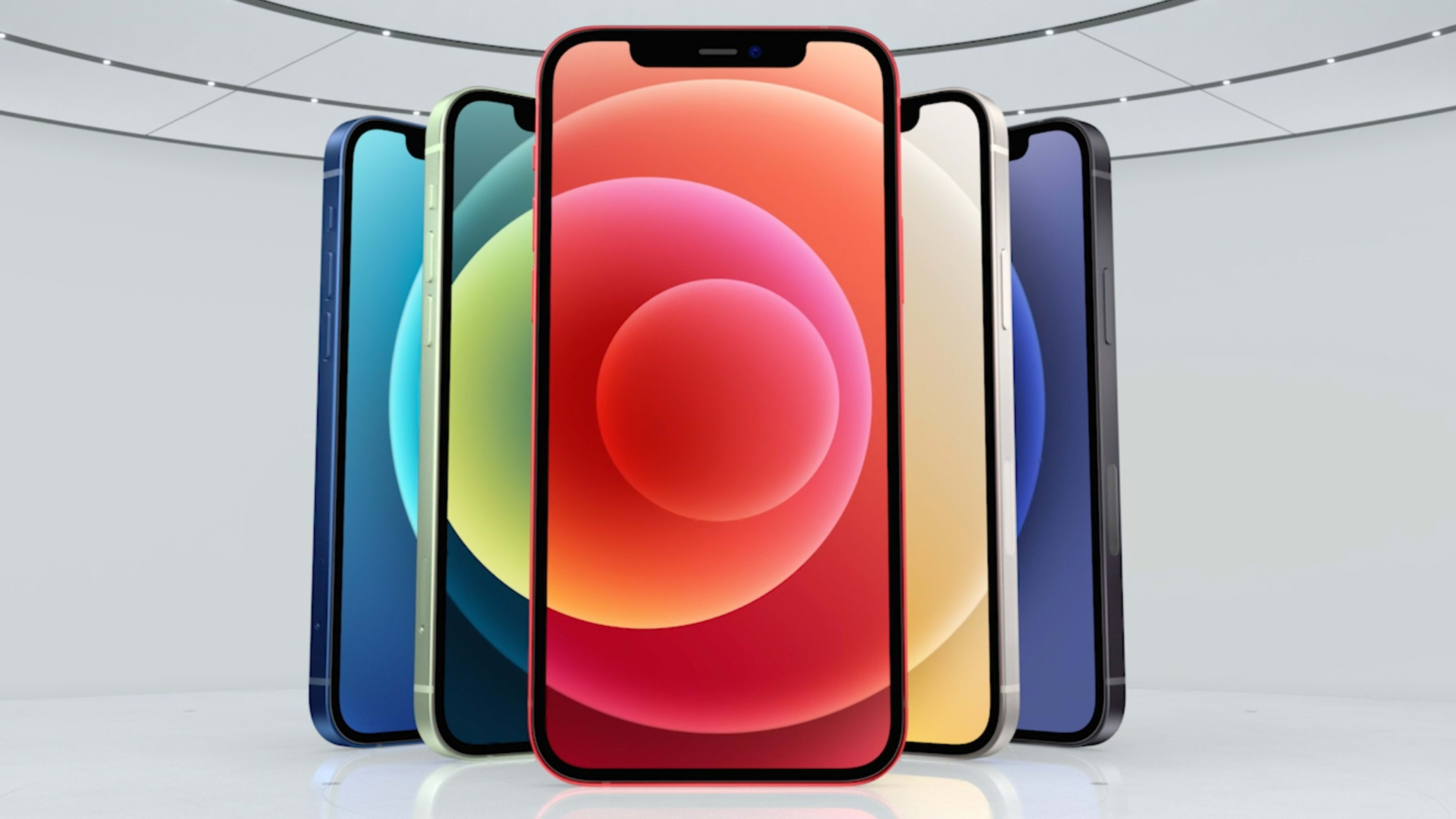Apple announced four new iPhone 12 models today and set about the task of convincing people that they really do need the phones’ key new feature, 5G wireless connectivity.
The new iPhone 12 line, which was announced a little later than usual because of the pandemic, starts with a couple of fancy and expensive flagship devices—the 6.1-inch screened iPhone 12 Pro and the 6.7-inch screened iPhone 12 Pro Max, which start at $999 and $1,099, respectively. It ends with a couple of lower-priced options—the 6.1-inch screened iPhone 12 and a 5.4-inch iPhone 12 mini, which start at $799 and $699, respectively.
The iPhone 12 Pro and Pro Max come in 128 GB, 256 GB, and 512 GB options. The iPhone 12 and iPhone 12 mini come in 64 GB, 128 GB, and 256 GB options.
All the new phones are powered by a new A14 Bionic processor and have Super Retina XDR displays. The phones use a new screen-glass technology, developed with Corning, called Ceramic Shield Front Cover, which increases the hardness and resistance to drops, Apple says.
Apple does not appear to have added an extra cost for the new 5G modems, but the modem may offer the biggest reason for people to upgrade from older iPhones.
The expensive ones
The iPhone 12 Pro and Pro Max get some advanced features that the less expensive phones don’t, of course. Chief among them are the additional camera features. The announcement infomercial today made it sound like “Pro” refers to professional photographers.
A new “ProRAW” format lets photogs shoot Dolby Vision video at 60 frames per second. A new lidar depth camera will make for better portrait mode shots and more immersive augmented reality (AR) experiences. The phones offer three cameras on the back—a wide-angle camera, an ultrawide, and a telephoto lens.
The iPhone 12 Pro and Pro Max come in four stainless steel finishes—graphite, silver, gold, and pacific blue.
MagSafe returns
All the new phones work with a new MagSafe magnetic charger, which borrows its brand name from the old magnetic MacBook Pro power connector introduced in 2006. The circular charging interface attaches to the back of the iPhone 12, while inside the phone a ring of magnets guides it to the right position.
It’s back, baby. pic.twitter.com/JbF2po6M3T
— Harry McCracken 🇺🇦🇮🇱 (@harrymccracken) October 13, 2020
But MagSafe is sold separately, and the iPhone 12 boxes will not contain the formerly obligatory white USB-A adapter. Apple reasons that everybody already has one of those (or seven) laying around, so shipping more would just harm the environment. The iPhone 12 box will include a Lightning to USB-C cable, requiring the new USB-C wall adapter, which owners of older iPhones may not have. Apple will also omit the white EarPods headphones from the iPhone 12 box.
5G speed
This year’s iPhones contain new Qualcomm 5G modems, after using a modem built in partnership with Intel for the past few years.
While the current line of iPhone 11 phones can support top wireless speeds of 1.6 gigabits per second, Apple says the new phones can get you up to 4 Gbps—that is, if your service provider can deliver that kind of speed. Apple says typical 5G speeds in the U.S. will average only about 1 Gbps. That’s still more than enough speed. Apple highlighted one game developer who said game play on 5G could get up to 25 times faster.
Recognize your brand’s excellence by applying to this year’s Brands That Matter Awards before the early-rate deadline, May 3.
